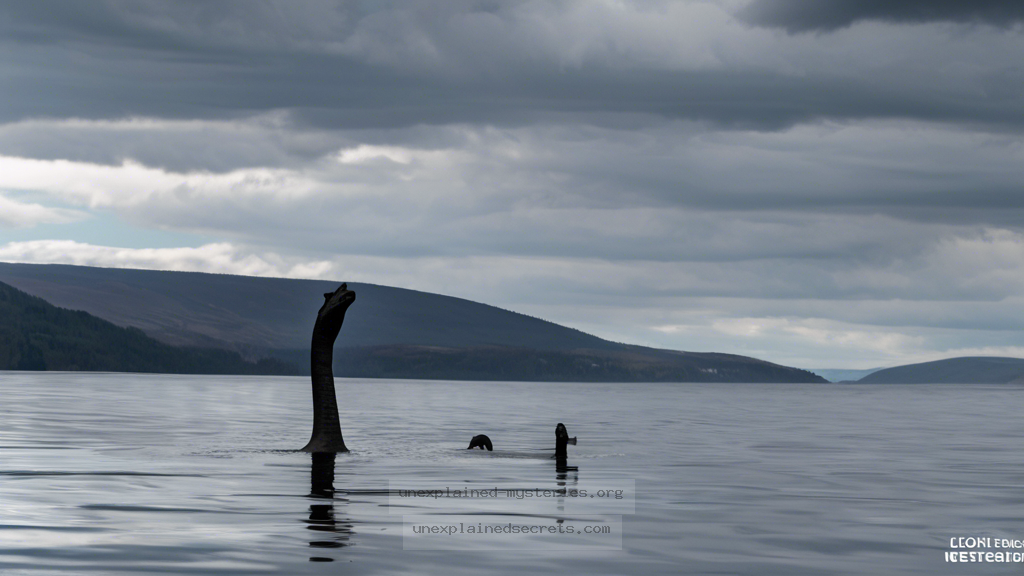What Secrets Lie Beneath the Surface of Loch Ness? An In-Depth Analysis of Sonar Detections and the Elusive Nessie
What Secrets Lie Beneath the Surface of Loch Ness? An In-Depth Analysis of Sonar Detections and the Elusive Nessie
The Loch Ness Monster, affectionately known as “Nessie,” has captured the imagination of people worldwide for decades. But what exactly are the secrets that lurk beneath the surface of Loch Ness? The intriguing question of sonar detections has become a focal point in the quest to either prove or debunk the existence of this mythical creature. This post delves into the history, theories, and implications of sonar detections in Loch Ness, examining the evidence, alternative perspectives, and future research initiatives that continue to fuel the mystery.
Historical Context of Loch Ness and Its Monster
The legend of the Loch Ness Monster dates back to ancient times, with references found in texts as early as the 6th century. The most famous account comes from the 1930s when a photograph known as “The Surgeon’s Photo” purportedly captured a glimpse of the creature. This image sparked public interest and set off a series of expeditions to uncover the truth about Nessie. Despite numerous sightings and alleged encounters, the question of Nessie’s existence remains unresolved. Enter sonar technology, a tool that has transformed the way we explore aquatic mysteries.
Understanding Sonar Technology
Sonar, or Sound Navigation and Ranging, is a technology that uses sound waves to detect objects underwater. By emitting sound pulses and measuring the time it takes for echoes to return, researchers can create images of the underwater environment. There are two primary types of sonar: active and passive. Active sonar sends out sound waves and listens for echoes, while passive sonar only listens for sounds made by objects in the water. Both methods have been employed in the search for Nessie.
Notable Sonar Expeditions at Loch Ness
Several expeditions have utilized sonar technology to search for evidence of the Loch Ness Monster. One of the most significant was the 1987 Operation Deepscan, which involved a fleet of boats equipped with sonar devices that scanned the loch’s depths. The operation detected large, unexplained objects at various depths, sparking renewed interest in Nessie. However, subsequent investigations revealed that many of these objects were likely logs or other debris, rather than the elusive creature itself.
Case Study: The 2018 Loch Ness Survey
In 2018, a survey led by a team of researchers from the University of the Highlands and Islands utilized advanced sonar technology to explore Loch Ness. This expedition aimed to create a detailed map of the loch while searching for any signs of the monster. Their findings highlighted significant underwater structures and potential habitats for large creatures, but no definitive evidence of Nessie was found. This case study illustrates the challenges and complexities of using sonar technology in such a vast and murky body of water.
Theories Surrounding Sonar Detections
Several theories have emerged regarding the sonar detections in Loch Ness. Some believe that the large objects detected could be large fish or even eels, as the loch is home to various species, including the elusive European eel, which can grow to impressive sizes. Others posit that the detections could be the result of underwater currents or geological formations that create sonar anomalies. The debate continues, as researchers strive to differentiate between myth and reality.
Alternative Perspectives: Skepticism vs. Belief
The Loch Ness Monster has its fair share of skeptics and believers. Skeptics argue that the numerous sonar detections can be attributed to misinterpretations of the data, general aquatic life, and the natural environment of the loch. On the other hand, believers maintain that the lack of conclusive evidence does not negate the possibility of Nessie’s existence. This dichotomy fuels ongoing discussions and investigations, keeping the mystery alive.
Common Misconceptions About Sonar and Loch Ness
Many misconceptions surround both sonar technology and the Loch Ness Monster. A common belief is that sonar can identify specific species or types of creatures, but the reality is more complex. Sonar technology can only provide a general indication of size and shape. Additionally, the murky waters of Loch Ness, which are rich in sediment, can hinder sonar effectiveness, leading to misleading results. Understanding these limitations is crucial for interpreting sonar data accurately.
Best Practices for Investigating Loch Ness
For those interested in investigating the Loch Ness Monster, employing best practices is essential. Collaborating with experts in marine biology and sonar technology can enhance the quality of research. Additionally, utilizing multiple methods of investigation—such as visual surveillance, environmental DNA (eDNA) sampling, and traditional folklore studies—can provide a more comprehensive understanding of the loch and its mysteries.
The Future of Loch Ness Research
Looking forward, the future of Loch Ness research is promising. Advances in technology, such as drones equipped with sonar and underwater cameras, are set to enhance exploration efforts. Moreover, the application of eDNA techniques allows researchers to collect genetic material from the water, potentially identifying unknown species. As technology progresses, so too does the potential for new discoveries in the depths of Loch Ness.
Conclusion: The Enduring Mystery of Loch Ness
In conclusion, the question of what lies beneath the surface of Loch Ness remains one of the most captivating mysteries in cryptozoology. While sonar detections have provided intriguing data, they also raise questions about interpretation and the nature of the underwater environment. As research continues, both skeptics and believers will undoubtedly keep their eyes peeled for any sign of Nessie, ensuring that this legendary creature remains a topic of fascination for generations to come. Whether it’s a misunderstood sonar echo or the elusive presence of a prehistoric creature, the mystery of Loch Ness is far from over.
Other Articles
Recent Posts
- What Happened to Flight MH370? The Conspiracy Theories That Still Haunt Us
- What Secrets Lurk Within the Walls of the Infamous Trans-Allegheny Lunatic Asylum?
- What Evidence Supports the Existence of Bigfoot in the Pacific Northwest?
- What Happened to the Indus Valley Civilization? Unraveling the Mysteries of Ancient Urban Life
- Can Telepathy Be Scientifically Proven Through Laboratory Evidence?







